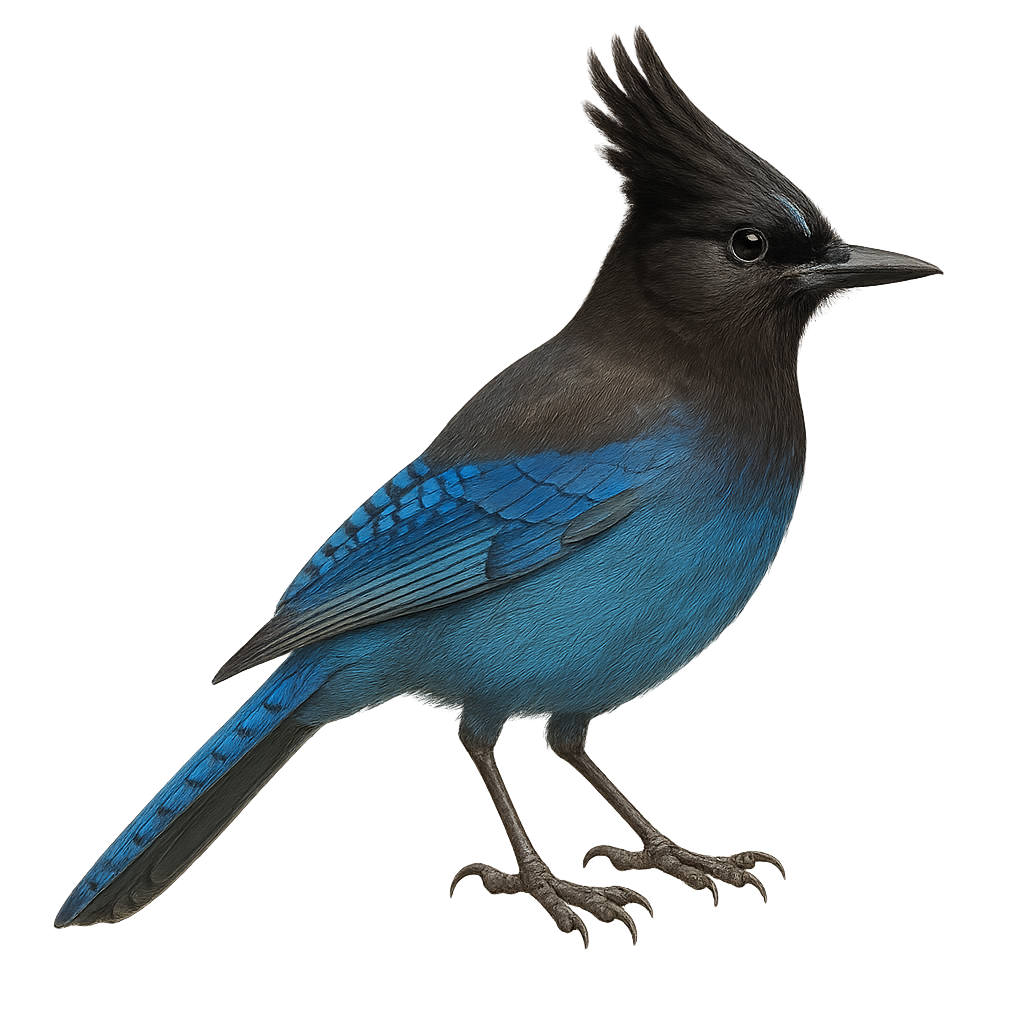Your wildlife photography guide.
Explore the steller's jay in detail, study its behavior, prepare your shots.
Where to observe and photograph the steller's jay in the wild
Learn where and when to spot the steller's jay in the wild, how to identify the species based on distinctive features, and what natural environments it inhabits. The WildlifePhotographer app offers tailored photography tips that reflect the steller's jay’s behavior, helping you capture better wildlife images. Explore the full species profile for key information including description, habitat, active periods, and approach techniques.
Steller's Jay
Scientific name: Cyanocitta stelleri

IUCN Status: Least Concern
Family: CORVIDAE
Group: Birds
Sensitivity to human approach: Suspicious
Minimum approach distance: 5 m
Courtship display: March to May
Incubation: 16-18 jours
Hatchings: April to June
Habitat:
Coniferous forests, mixed forests, mountainous areas
Activity period :
Primarily active during the day, with peak activity in the morning and late afternoon.
Identification and description:
The Steller's Jay, with its striking blue plumage and distinctive black crest, is a fascinating bird of the coniferous forests of western North America. Measuring about 30 to 34 cm in length, it is distinguished by its black head and bright blue body. This bird is known for its bold and curious behavior, often seen foraging on the ground for food or skillfully flying between trees. Omnivorous, it feeds on seeds, fruits, insects, and even small animals. The Steller's Jay is also an excellent mimic, capable of reproducing the calls of other birds and even some human sounds.
Recommended lens:
400mm – adjust based on distance, desired framing (portrait or habitat), and approach conditions.
Photography tips:
To photograph the Steller's Jay, focus on coniferous forests where it is most active. Use a 400mm lens or longer to capture precise details of its blue plumage and black crest. Be patient and discreet, as although suspicious, this bird may approach if you remain still. Take advantage of moments when it is feeding or mimicking other sounds to get unique shots. Morning or late afternoon light is ideal to highlight its vibrant colors.
The WildlifePhotographer App is coming soon!
Be the first to explore the best nature spots, track rutting seasons, log your observations, and observe more wildlife.
Already 1 439 wildlife lovers subscribed worldwide

